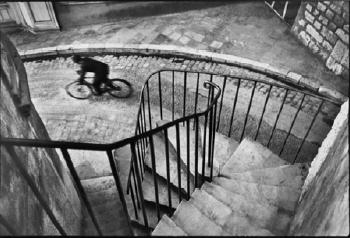
MoMA - The Museum of Modern Art 11 West 53 Street 10019 New York États-Unis
The exhibition comprises 300 prints from 1929 to 1989, at least one fifth of them previously unknown to the public, and focuses on the most productive decades of the 1930s through the 1960s. Also included is a generous selection of original issues of Life, Paris Match, and other magazines in which many of the pictures first appeared. Cartier-Bresson’s uncanny talent for seizing lasting images from the flux of experience, long identified with the title of his book The Decisive Moment (1952), made him a leading figure both in photography’s experimental modernism of the 1930s and the very different realm of photojournalism after World War II. Henri Cartier-Bresson: The Modern Century offers a fresh overview of that complex achievement by drawing upon a great deal of previously inaccessible information and images from the Henri Cartier-Bresson Foundation in Paris. Established in 2002, two years before the photographer’s death at the age of 95, the Foundation has generously lent 220 prints to the exhibition, which is organized by Peter Galassi, Chief Curator, Department of Photography, The Museum of Modern Art.
The exhibition is divided into 12 sections. The first is devoted to the early 1930s, when the young Surrealist rebel used the quickness and mobility of the handheld Leica camera to invent a new brand of creative magic. The second section, on the aftermath of World War II and the postwar political and social transformations of Asia, introduces Cartier-Bresson’s long career in photojournalism. The remaining ten parts are thematic rather than chronological. The third, fourth, and fifth chapters explore the photographer’s loving evocations of age-old patterns of life in the East, the West, and in his native France. Sections on the United States and the Soviet Union are followed by extended photo-essays on China’s “Great Leap Forward” and the daily routines at Bankers Trust Company in New York. A selection of 34 outstanding portraits reveal Cartier-Bresson as one of the great portraitists of the twentieth century. The exhibition concludes with sections devoted to encounters and gatherings of all kinds in the lively theater of the street, and to the often unlovely rise of modernity—mechanization, industry, commerce, consumerism, and leisure—around the globe. Taken as a whole, the exhibition presents Cartier-Bresson as a keen observer of the global panorama of human affairs and as the author of the fullest, most varied, and far-ranging account of the modern century that any photographer has produced.

